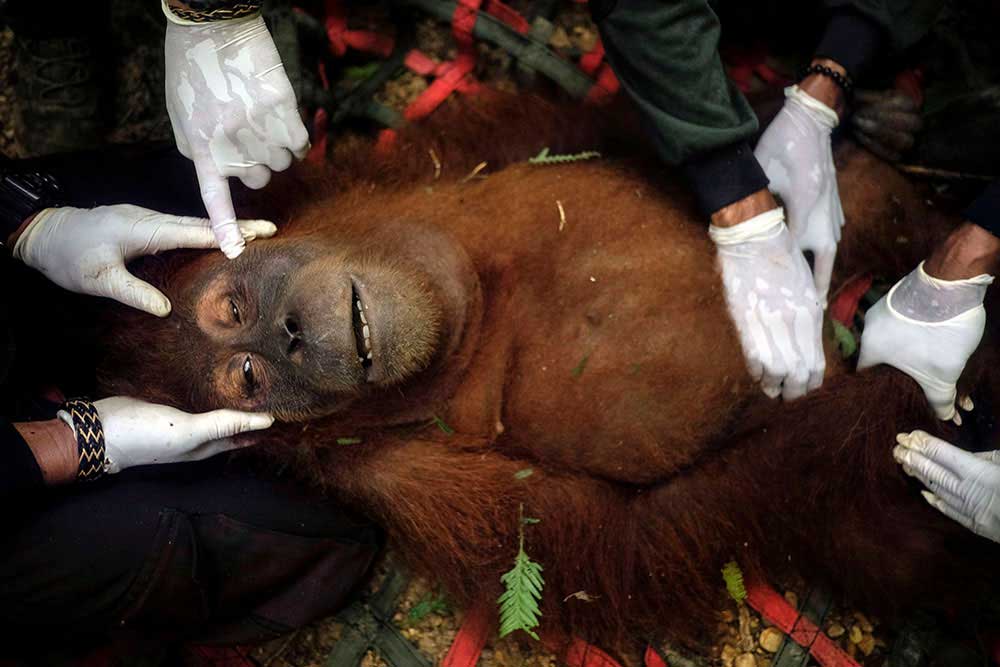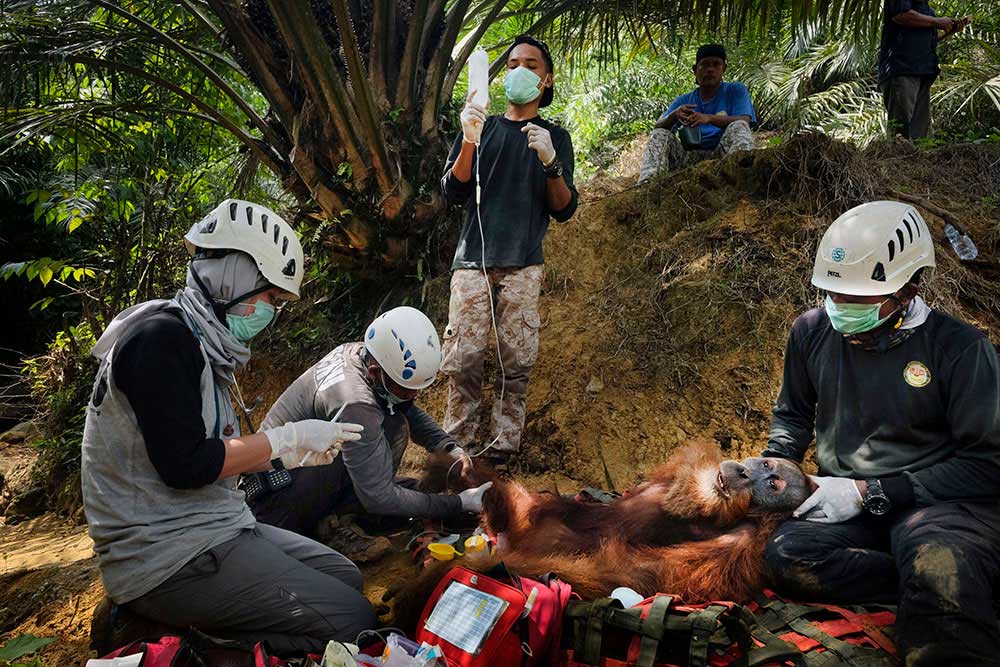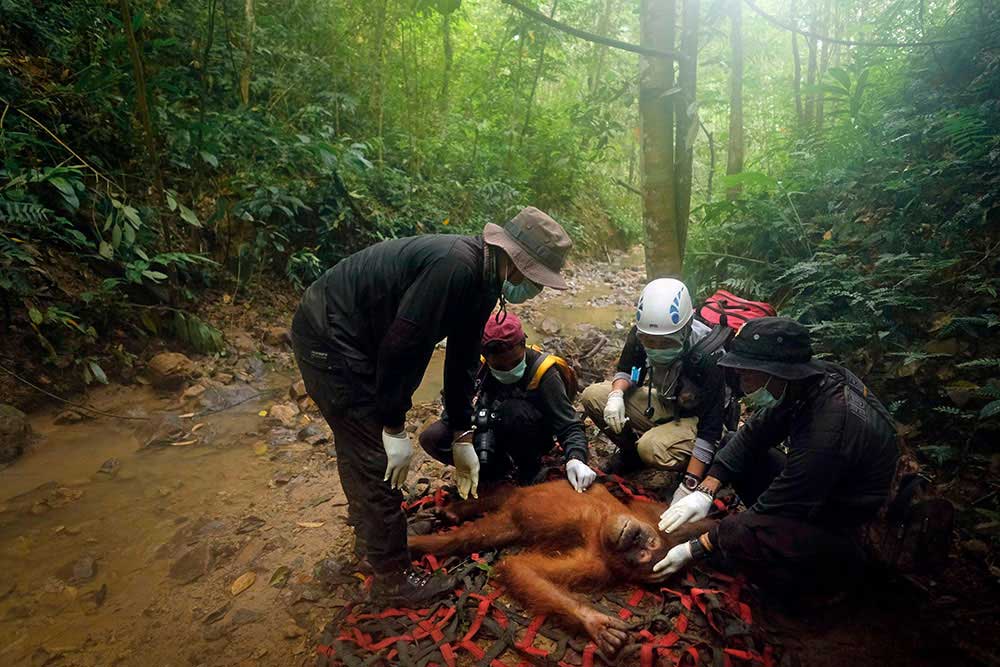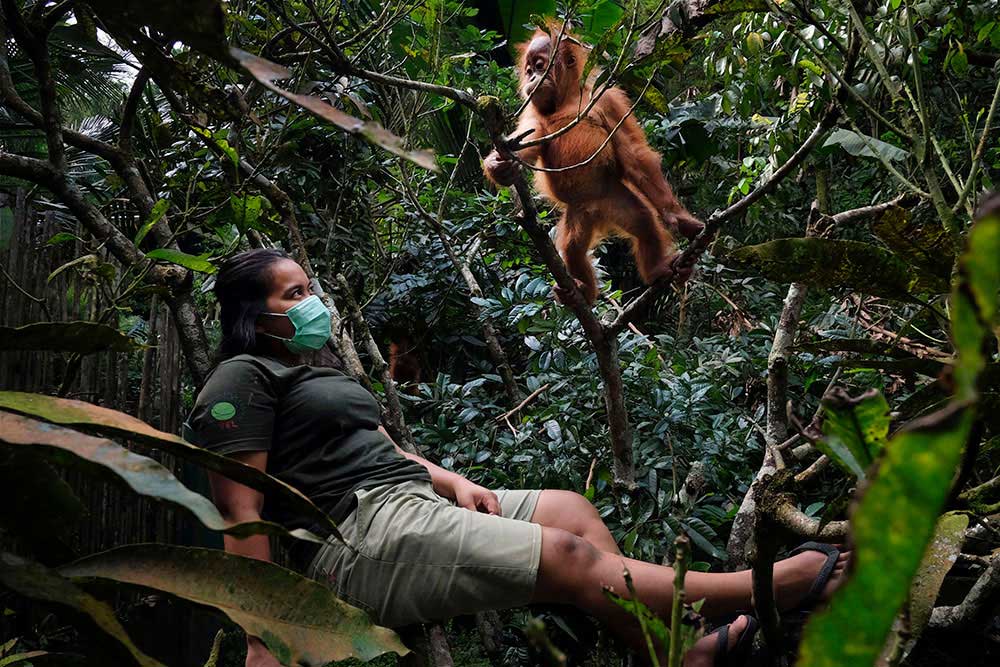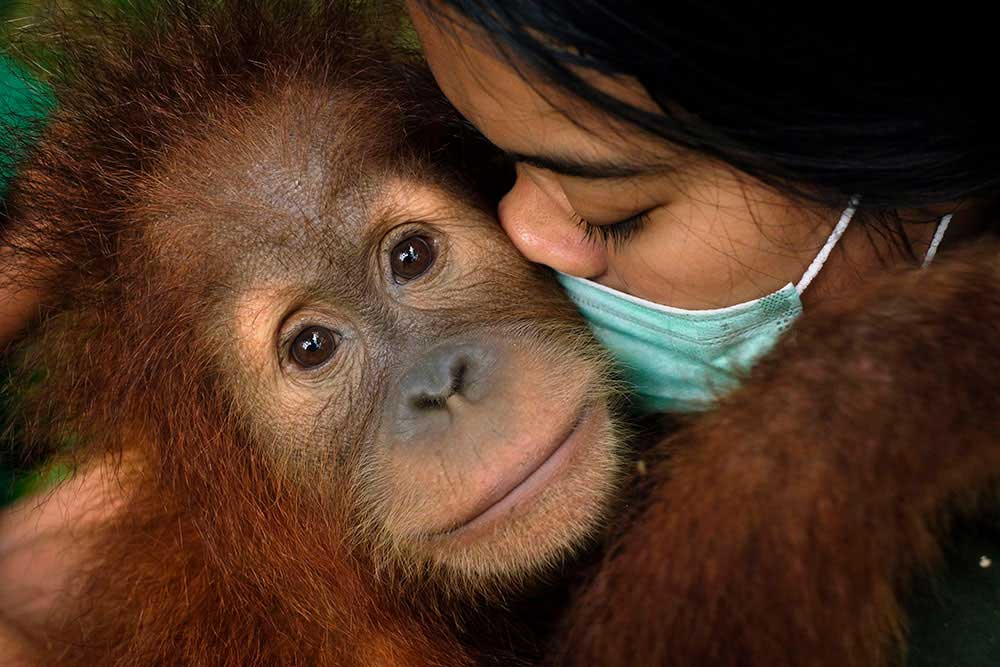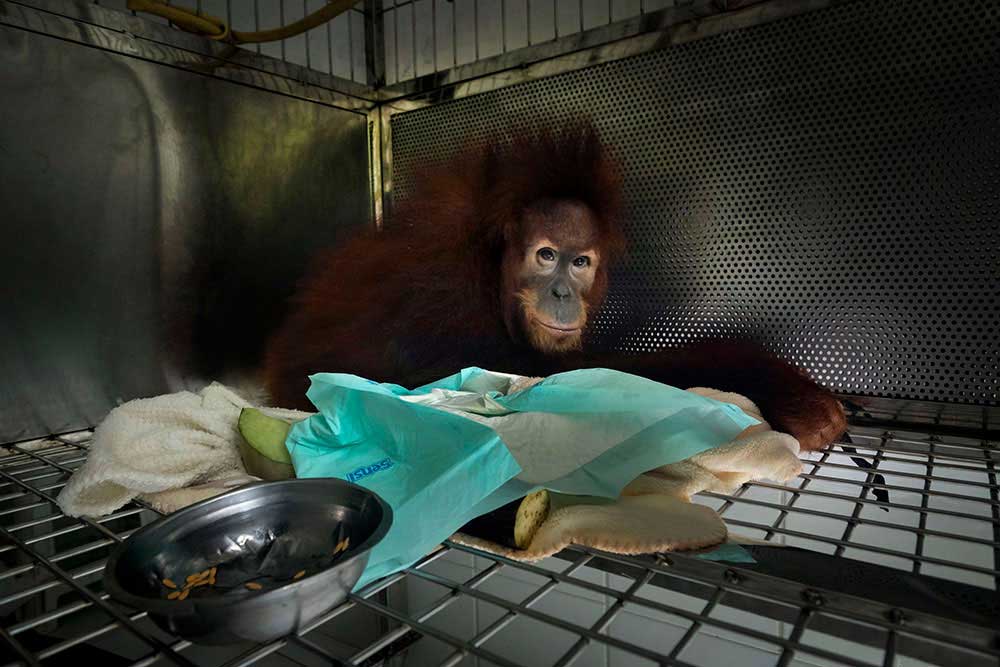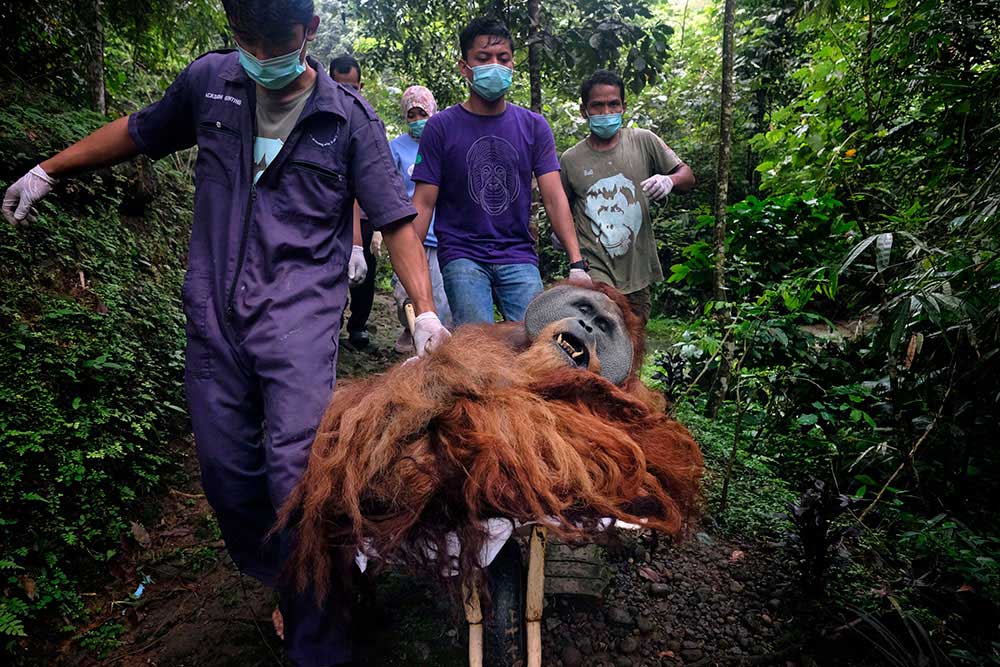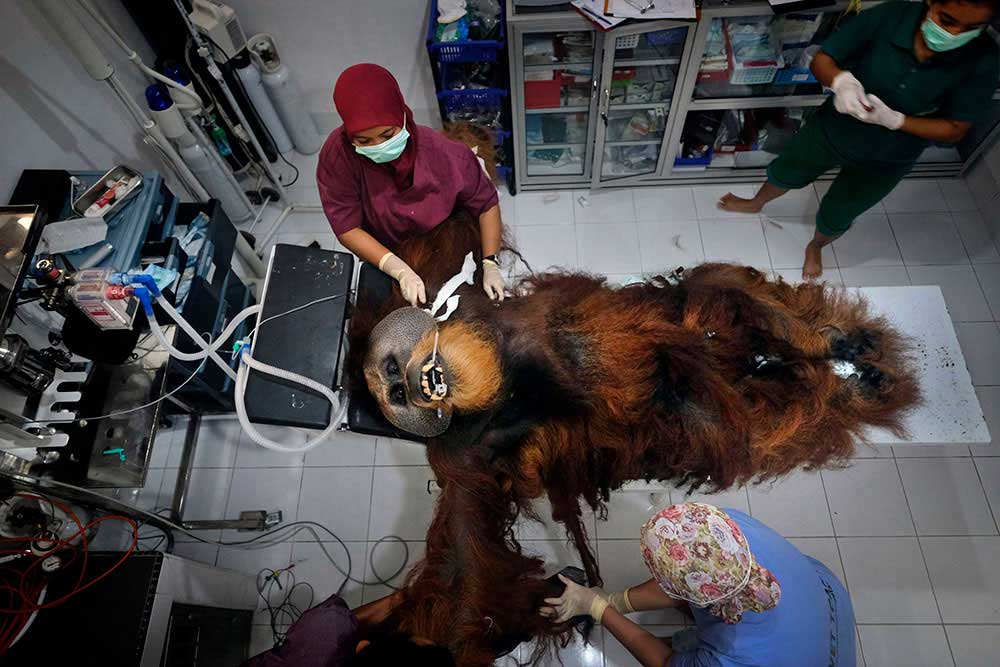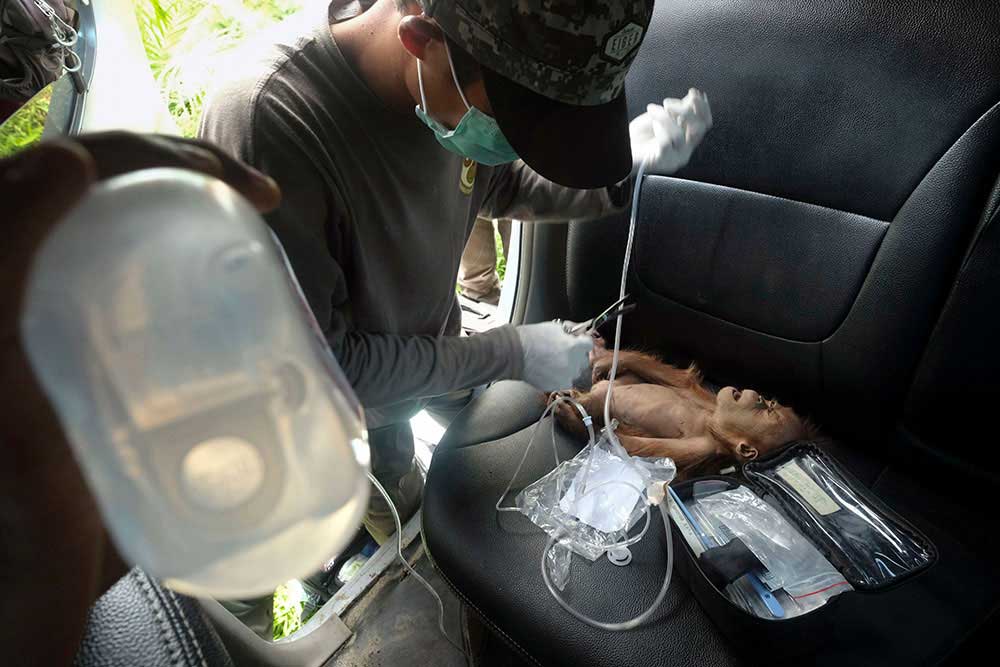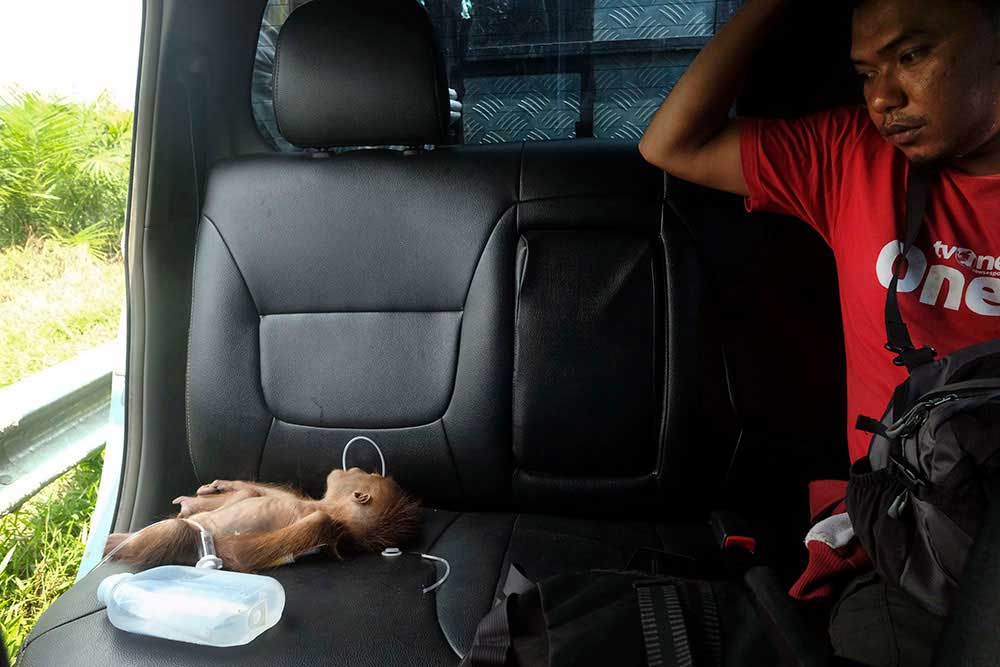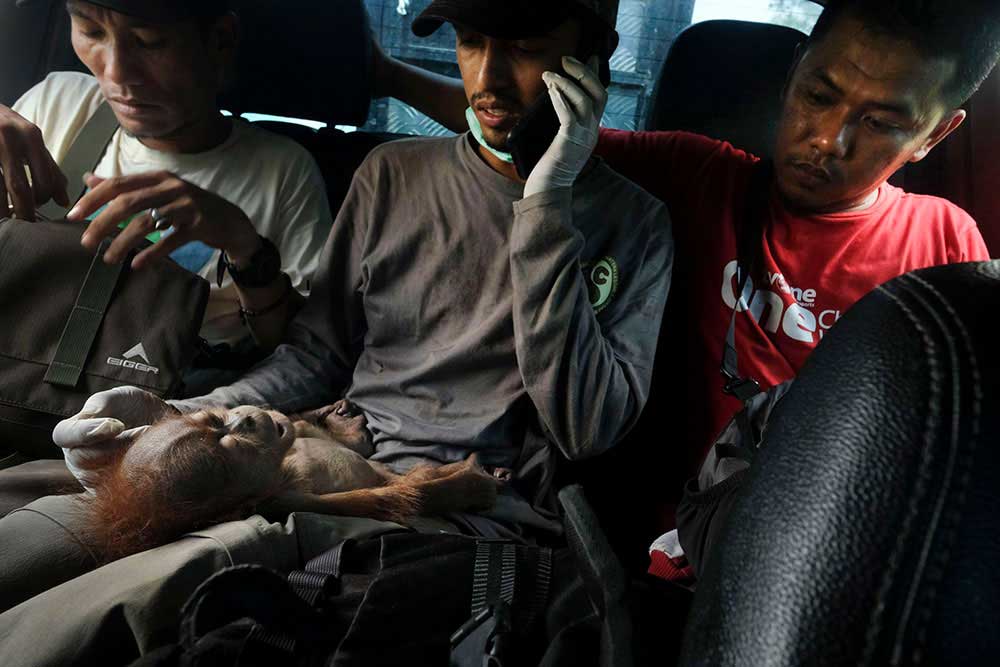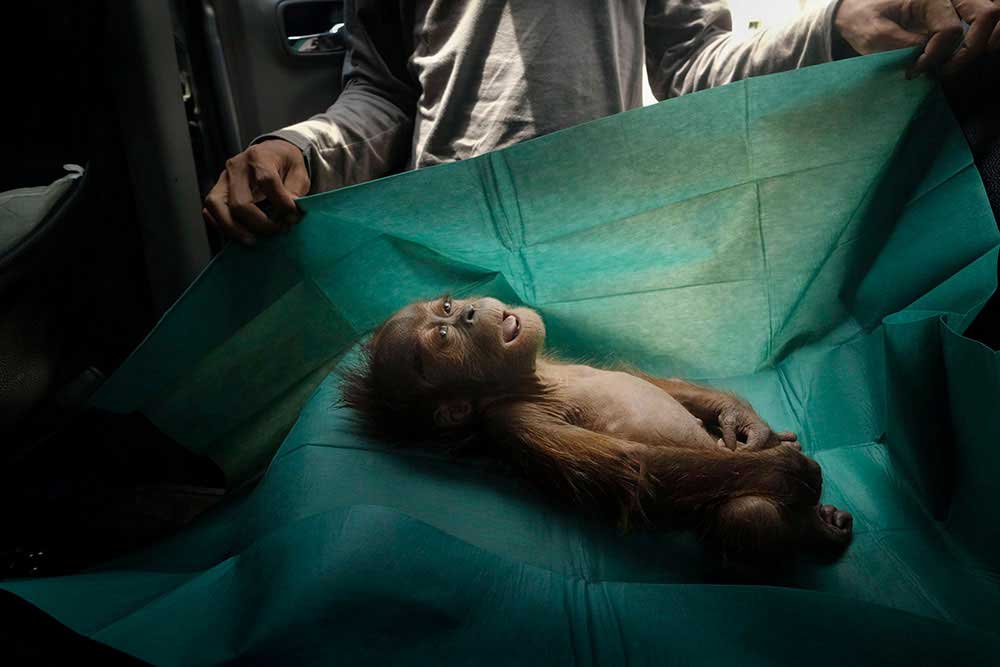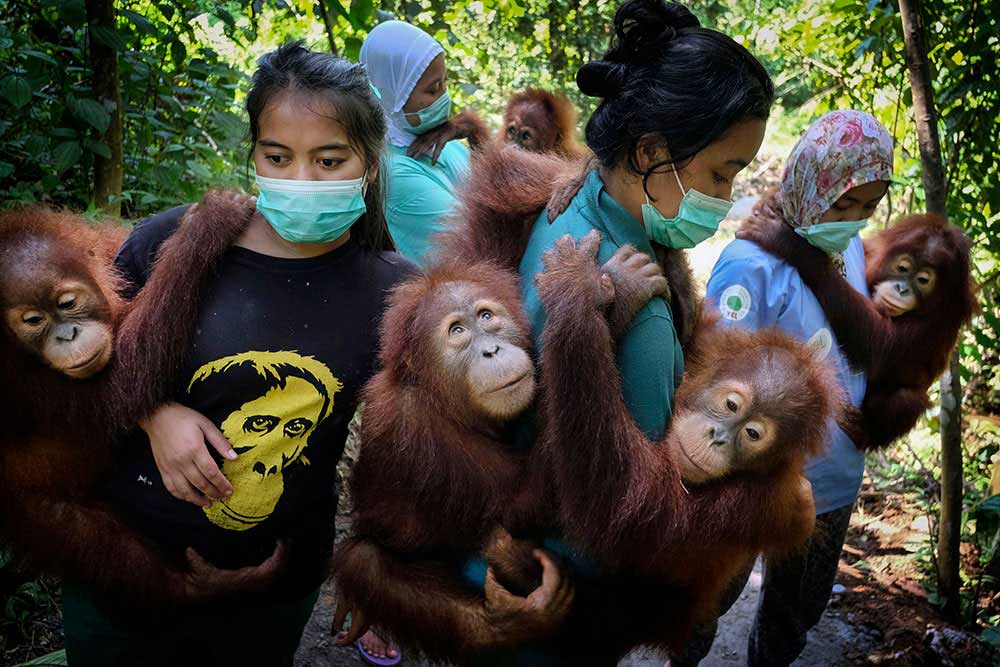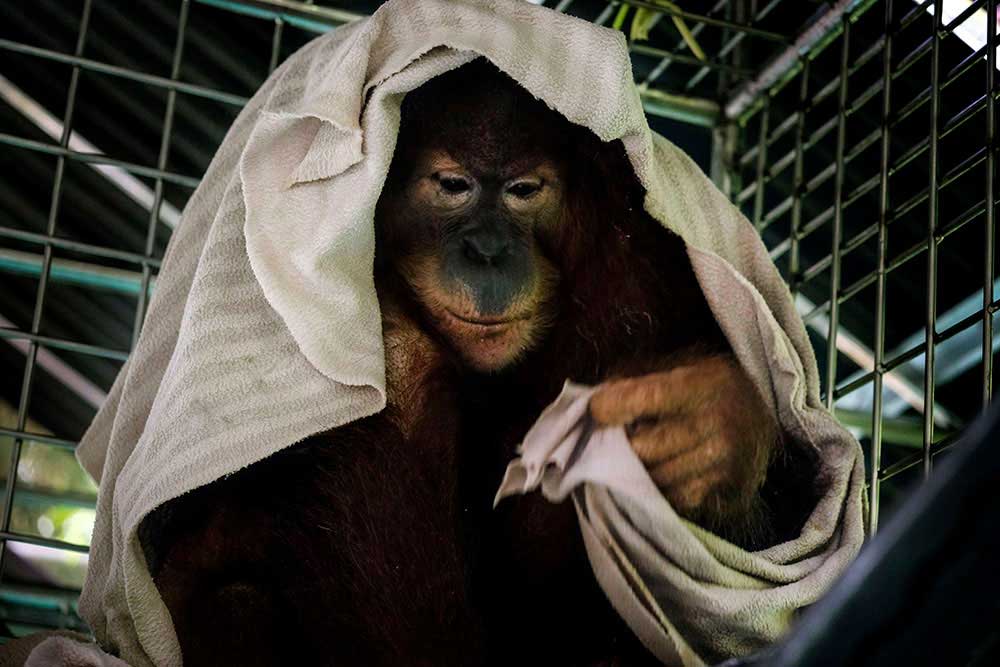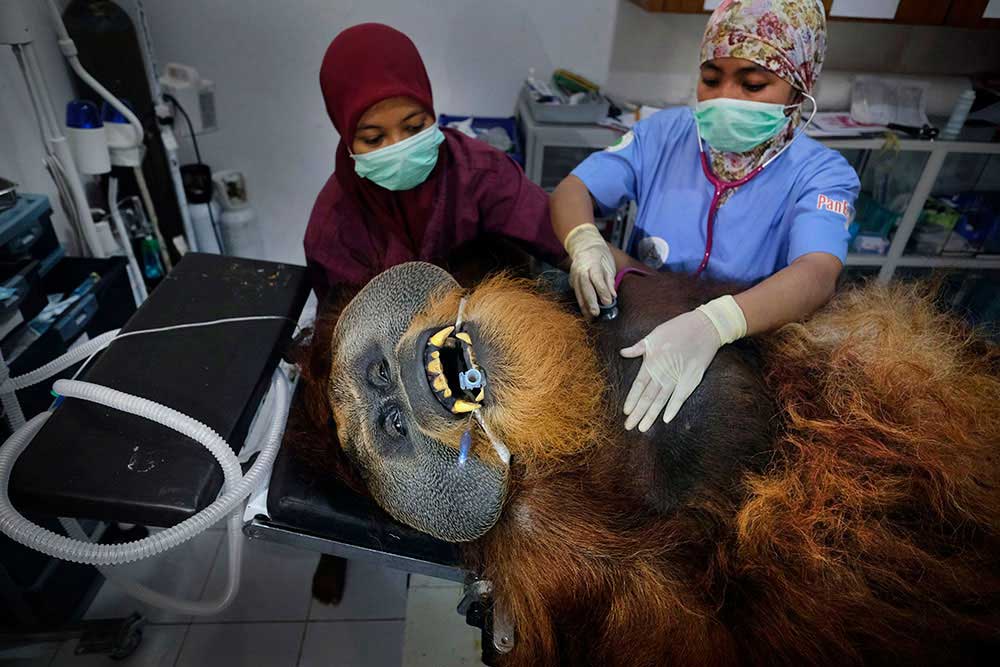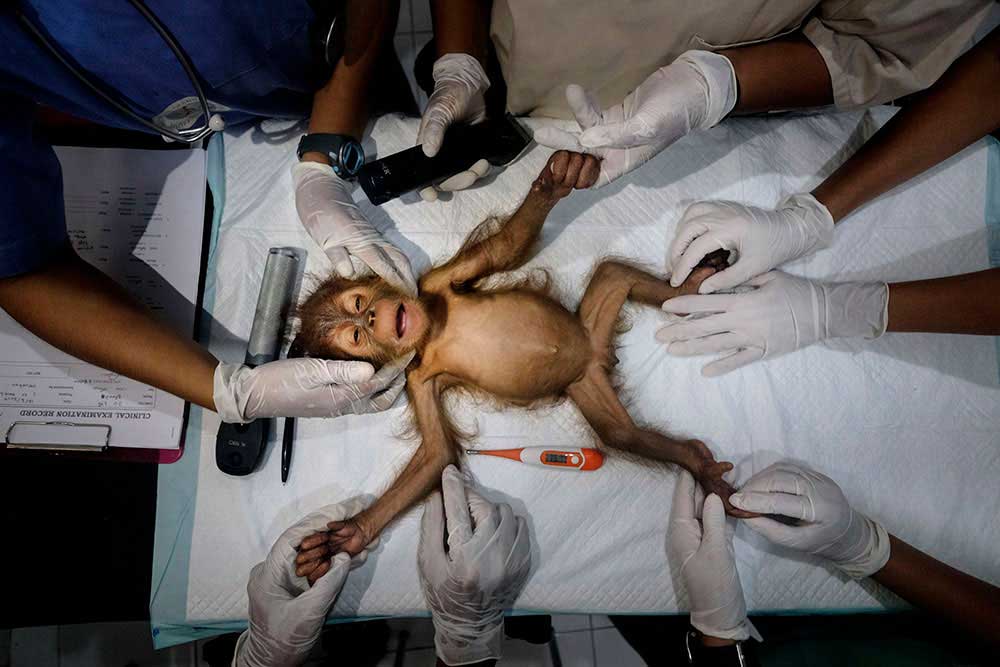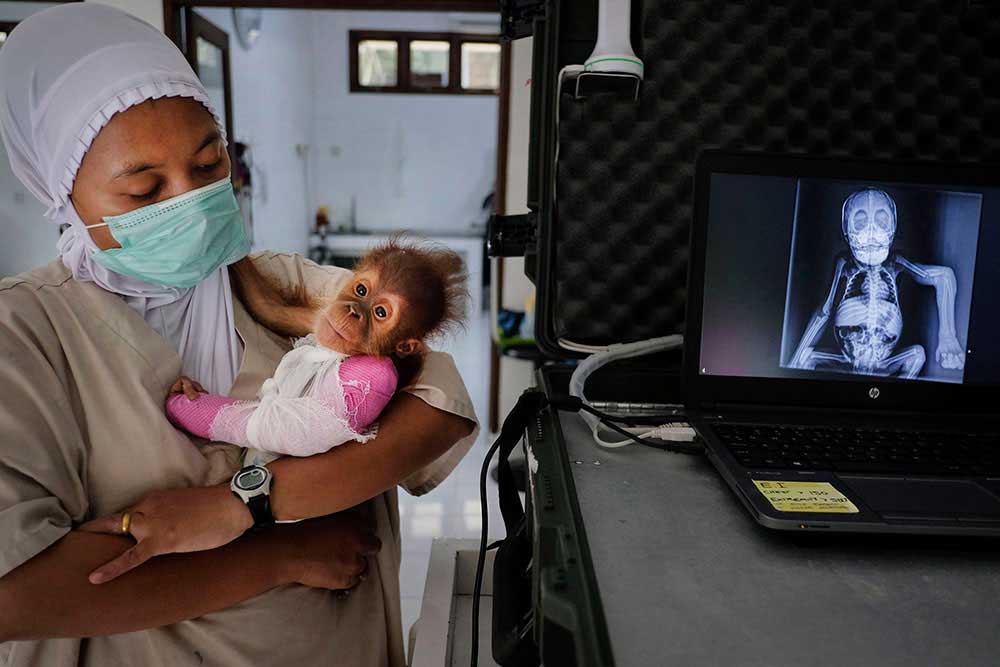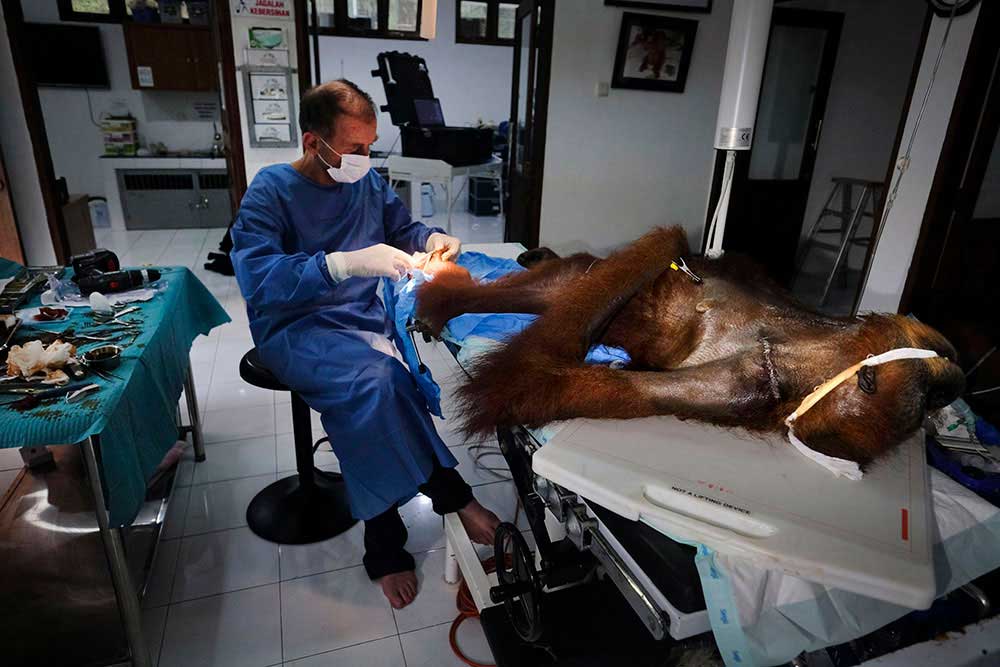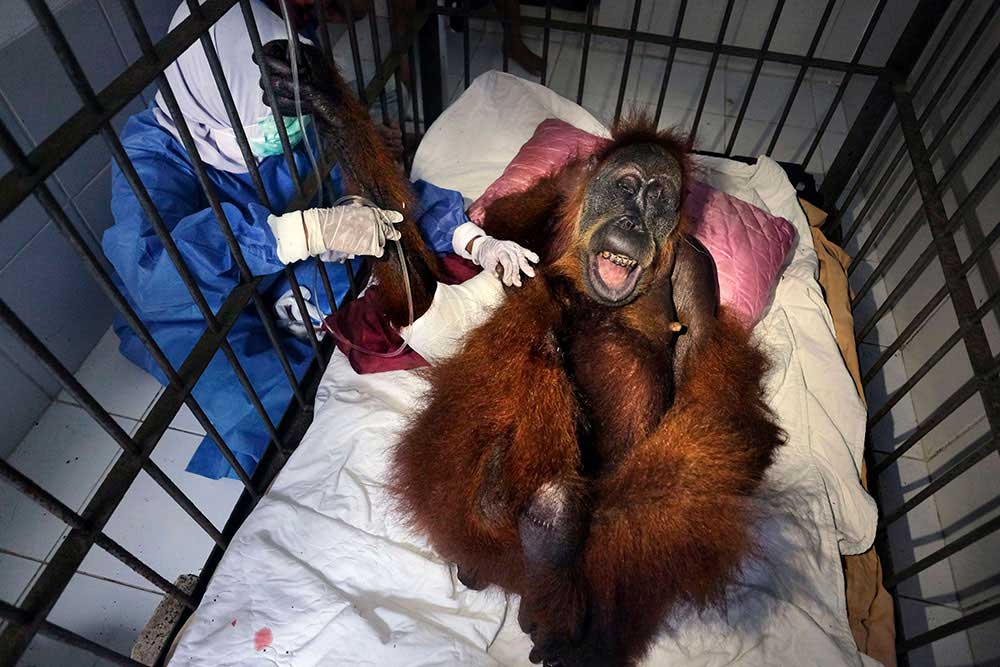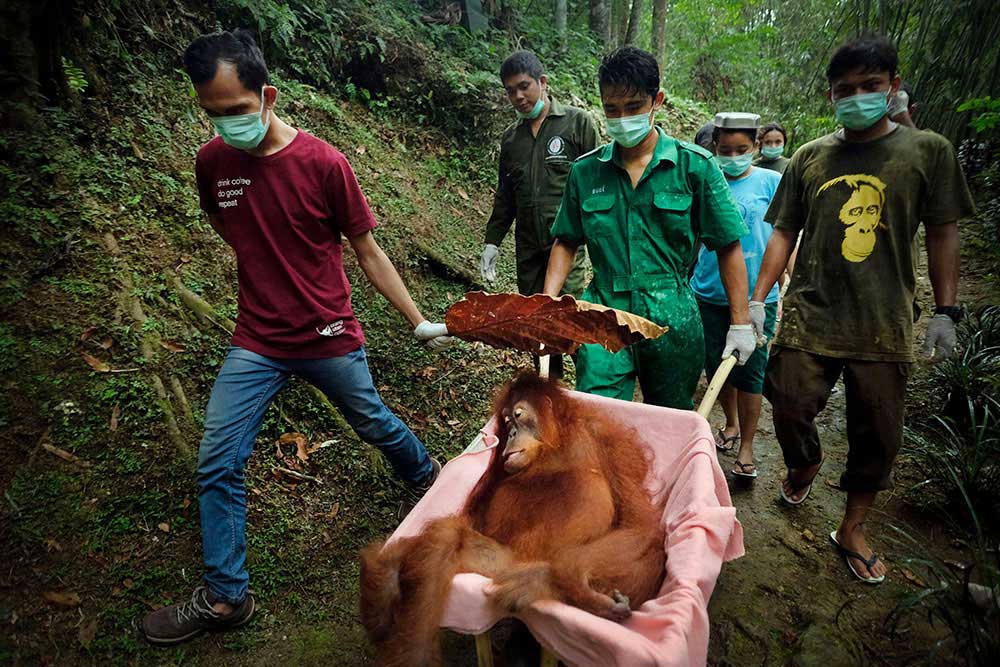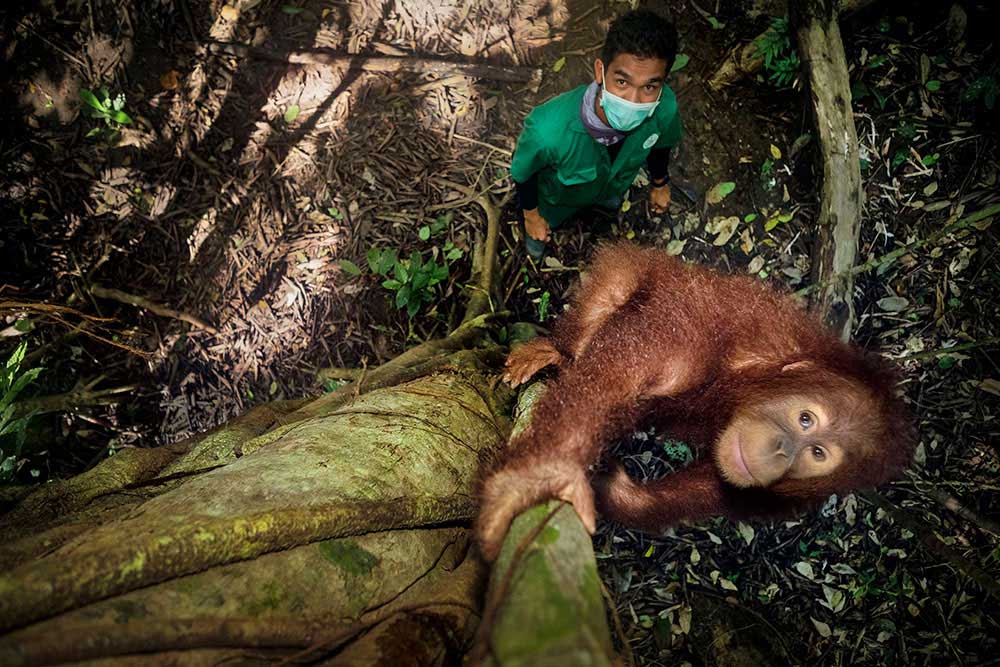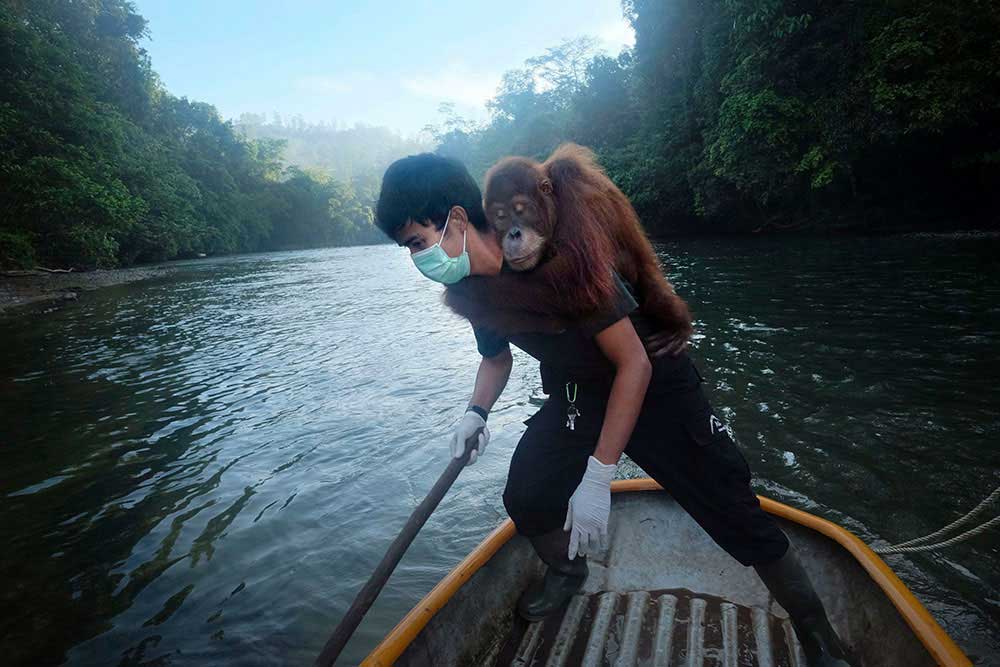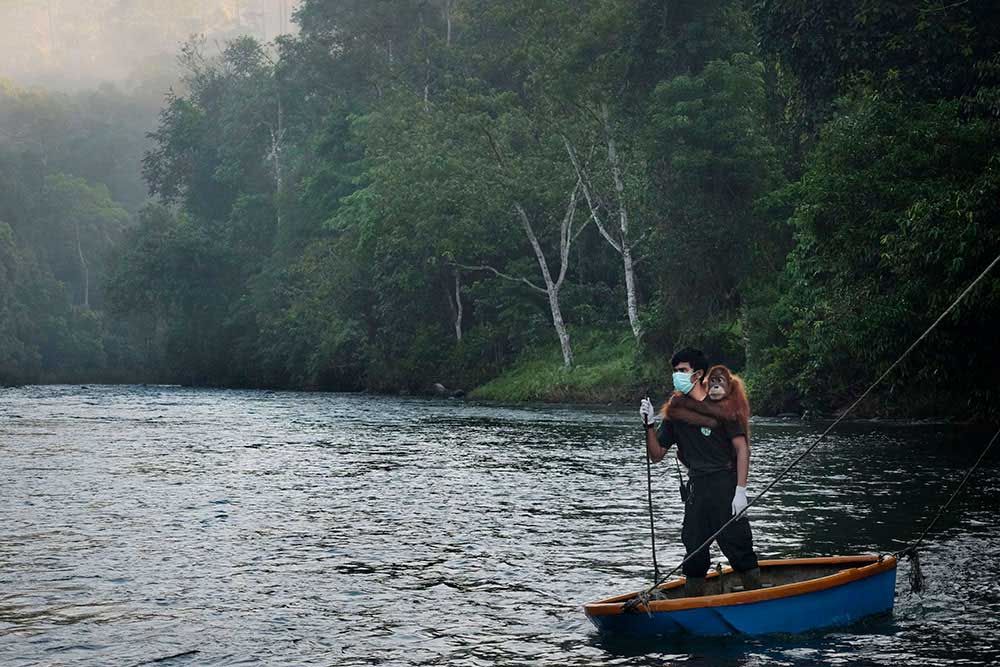This series documents the incongruous behavior between man and the environment in Sumatra. On the one hand, humans destroy virgin forests wounding and killing animals, while on the other, they do everything possible to save them. One day an orangutan is found peppered and blinded by 74 air bullets, the next, a surgeon travels halfway across the planet to save it.
Orangutans spend their days moving through the tops of trees feeding primarily on fruit, bark and vegetation. Every evening, they build a new nest, but their routine is being sabotaged. Haphazard clearing of the forest creates pockets forcing the animals into plantations in search of food and lodging, resulting in conflicts. Very often, they are trapped and need to be rescued. Once located, the animal is brought down with a sedation dart giving the vet (and rescue team) approximately 30 minutes to perform a thorough, on-site medical check. Depending on the animal’s condition, it will be released in a forest or transported to the orangutan hospital for treatment.
The greatest reward for everyone working with orangutans is the release of those who have assimilated the skills to survive in the wild. Forest training school teaches them to build nests and find fruit and leaves (it is estimated that +/- 7 hours, of an orangutan’s day, should be spent looking for food). When ready, the animals will travel overnight to a reintroduction center.
Eventually, on graduation day, the orangutan is ferried across the river and released into a protected national park. For months, I have shadowed the members of several organizations coordinating their efforts to rescue, rehabilitate and release orangutans. Beyond their dedication, I have witnessed passion transform to pride with every intervention. [Official Website]
Answers by Alain Schroeder
You just won two World Press Awards for the Orangutan series, what do these awards mean to you ?
The World Press Photo contest is the holy grail of photojournalism, similar to the Oscars in the film industry. Winning two 1st prizes is amazing. It seems that every time one of my stories has a really difficult start (Kid Jockeys and Saving Orangutans) there are some rewards in the end.
How will it hopefully contribute to the fate of the orangutans in Indonesia?
Beyond the emotional value of the shots and the cuteness of the subjects (everyone loves these animals), I would like people to think about the reasons orangutans are an endangered species and why they are being forced out of their natural habitat; depletion and fragmentation of the rainforest due to palm oil and rubber plantations, logging, road construction, mining and hunting.
As you can see in the story, conservationists, vets and caretakers are doing their part, but we must help them. In addition to funding and supporting organizations like the SOCP (Sumatran Orangutan Conservation Programme) and the OIC that tirelessly work to rescue and rehabilitate the animals, we as consumers need to change our behavior and reduce our consumption of products containing palm oil (of which there are many). The economic impact of a fundamental change in mindset at an individual level, will effectively contribute to safeguarding what remains of Indonesia’s rainforests.
The even bigger picture, is to stop deforestation and protect biodiversity globally, to ensure the health of our ecosystems and minimize the disruption of our climate.
Comments by Ian Singleton, Director of the SOCP
Does the SOCP (Sumatran Orangutan Conservation Programme) have a specific goal (in numbers) for how many orangutans you will have saved/released in the next 5-10 years?
Our goal is to have at least 250 reproducing animals in each of the two newly reintroduced populations. Given that not all will survive or reproduce, we would like to release at least 350 animals into each before we will consider them “potentially” viable and self sustaining in the long term. In Jantho, we have released 120 over 8 years, which averages 15 per year. 350 minus 120 is 230 and 230 divided by 15 gives us 15 more years to acheive that. In Jambi, we have released about 180 since 2003 which is 11 per year. 350 minus 180 is 170, and 170 divided by 11 is also about 15 years. So that would be our goal for the two reintroduced populations meaning we need decent long term funding support to acheive it.
Do you think the efforts of the SOCP will be enough to save the orangutans from possible extinction?
Yes, in the Leuser Ecosystem we still have circa 13,000 orangutans and if we can keep them connected as much as possible and viable, then hopefully when Indonesia is able to better protect its forests and prevent further fragmentation and degradation there’s still a good chance that there will be enough orangutans remaining in big enough populations to be viable over the long term. But we are not there yet. In Batang Toru, we are already close to the minimum viable numbers, and every individual or hectare of forest really counts. Those animals cannot tolerate further losses or further fragmentation, quite the opposite in fact. Existing, already fragmented, populations (e.g. the eastern block), really need to be reconnected to the western block asap, as they are not currently viable over the long term. Plus, we are creating two entirely new genetically viable and self sustaining populations which will act as a safety net should some catastrophe (disease for example) befall the existing remaining wild populations.



